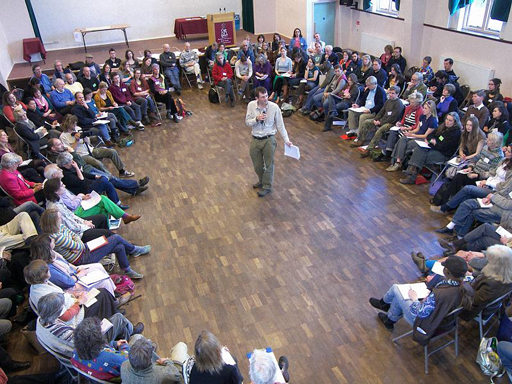6.2 The limits of localism I: the limits of inclusion

There is a long tradition of presenting ‘the city’ or local places as the best scale at which effective and democratic governance should be organised. This follows from rhetoric in which, since people live locally and experience the benefits and costs of government locally, it is assumed that local institutions should somehow be more responsive and accountable to these locally articulated concerns. The localism agenda of the UK Conservative/Liberal Democrat government elected in 2010, associated with the Big Society programme, is only the latest variant of this understanding; the same principle underwrote legislation introduced by the previous, Labour government to allow locally elected mayors (see Clarke and Cochrane, 2013).
In both cases, ‘local’ institutions of governance and participation are presented as being more democratic on both intrinsic and instrumental grounds – it is assumed that people can participate more effectively in local institutional settings; and that the different insights of local communities can provide more direct access to the needs and requirements of communities affected by institutional decision making.
These sorts of assumptions about local democracy and local governance have been important in shaping normative models of the role of expert decision makers such as planners and environmental managers.
In one model, professional actors are understood as experts, bestowed with technical knowledge which allows them to intervene and impose their expertise within local fields of concern to resolve potentially contentious issues. This sort of model of ‘planning’ as a general logic of bureaucratic governance has been sharply criticised by writers such as Jane Jacobs in her critique of modernist urban planning or James Scott in his critique of the failures of modern development programmes.
Partly in response to these sorts of criticisms of the omniscient expertise of planning professionals, alternative approaches have emerged. Informed by ideas of communicative or deliberative democracy, these tend to present professionals as facilitators who bring together all affected parties, ensure all viewpoints are expressed and move disagreement towards more or less rational consensus, or at least agreement (Fincher and Iveson, 2008; Flyvbjerg, 1998; Forrester, 2009).
In both cases, of course, the role of professional decision makers is still presented as one of neutrality. The problem with these assumptions is that they tend to overestimate the inclusiveness of local governance procedures, and thereby have difficulty acknowledging that there might be other ways in which affected parties to any decision might want to articulate their interests or concerns. This is particularly the case once it is also recognised that some affected parties will not presume that local institutions are the best placed actors to address their grievances or concerns.
Activity 5
Read this short comment paper by Catherine Sutherland [Tip: hold Ctrl and click a link to open it in a new tab. (Hide tip)] , an academic researcher based in South Africa. She is reflecting on the general lessons to be drawn from the patterns of what she calls ‘insurgent urbanism’ that are a feature of the politics of planning in cities of the global South, and, it should be said, increasingly of the global North as well. As you read the piece, you might want to consider whether you can think of any local examples in your area of the dynamics of inclusion and exclusion that Sutherland identifies.
Discussion
The key lesson to draw from Sutherland’s analysis is that, once one recognises that local actors such as the state or local planning authorities are not necessarily empowered to act on the full range of concerns which might mobilise local constituencies, then it is no longer necessarily appropriate to privilege models of inclusive, consensual participation as the only valid form of public action that those constituencies might legitimately adopt in order to articulate their concerns.
In the terms of Iveson’s analysis of spaces of public address in Section 5, insurgent urbanism of the sort Sutherland discusses might well seek to use local forums of deliberation as venues for the articulation of their concerns without necessarily presuming that these same organisational spaces are the most effective scales at which power to act on their concerns is contained. And in this case, these sorts of insurgent actors might have important lessons to teach us about the limits of local autonomy in addressing spatially complex processes and problems.
